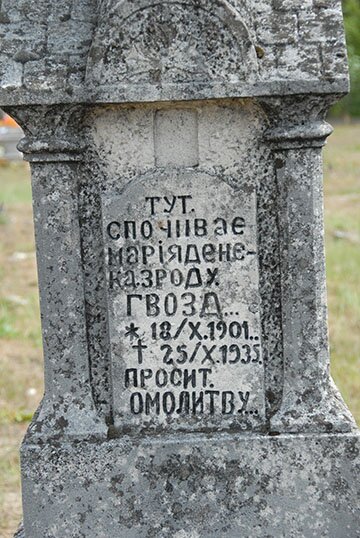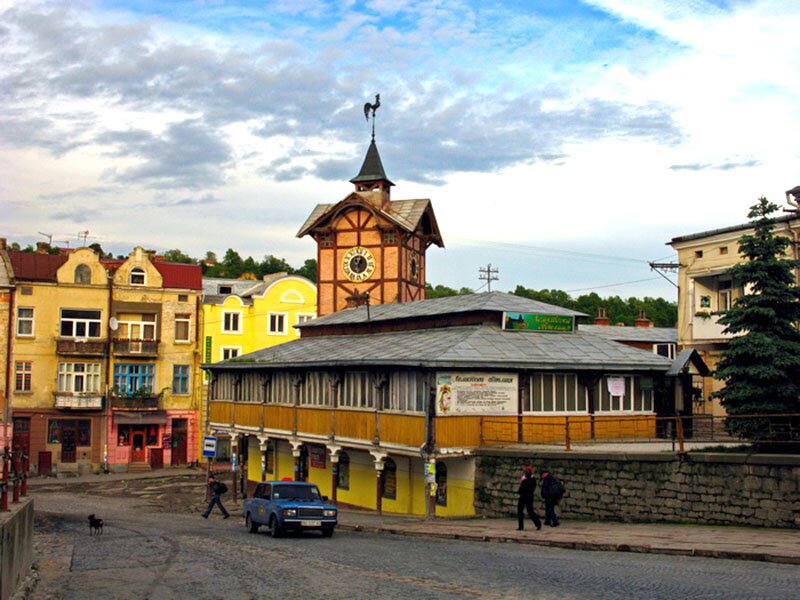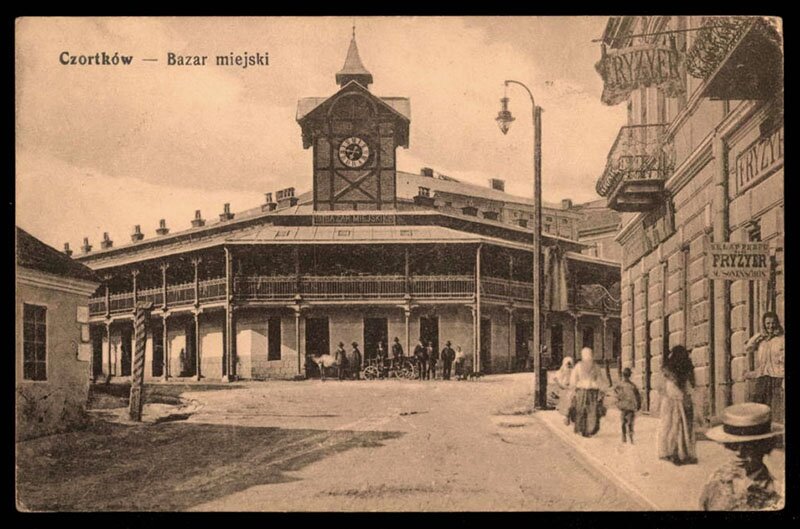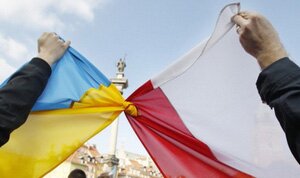
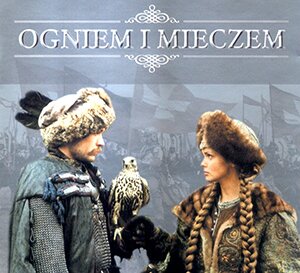 At the turn of the 20th and 21st centuries, in 2000 — on the world cinema screens was a cult film “With Fire and Sword”, dedicated to one of the most bloody wars between Poland and Ukraine during the Polish-Lithuanian Commonwealth (Rzeczpospolita). This joint work of Polish and Ukrainian directors and actors, despite all the tragedy of the events depicted, could be a symbolic act of reconciliation between the two neighboring nations. The importance of such reconciliation was clearly and unambiguously mentioned in the closing titles of the film — “And then Russia came. And as a consequence — Poland and Ukraine were gone. Unfortunately, the events of the 17th century did not become a lesson for them. Because the tragedy of confrontation of the two nations repeated several times. It happened as part of the Austro-Hungarian Compromise of 1867, when the powers of local authorities in Halychyna (Galicia) were given to the Poles, and Ukrainians became a “second-class community”. And during the Polish-Ukrainian inter-ethnic conflict (in fact, the war) in the same Halychyna in 1918-1919 after the collapse of the Austro-Hungarian Empire after the First World War. Then in 1920 when the Polish army invaded central Ukraine and captured Kyiv, when the civil war was blazing at the Ukrainian territory. And during World War II, when the Poles and Ukrainians, instead of uniting and fight the common enemy — Russia and Germany — clashed again in a duel in Volyn and Halychyna. And the winner's laurels went to Russia! Again indefinitely was postponed the revival of an independent Ukraine, and Poland again became a humble satellite of Moscow within the framework of the military-political bloc — Warsaw Pact and the economic union — the Council for Mutual Economic Assistance.
At the turn of the 20th and 21st centuries, in 2000 — on the world cinema screens was a cult film “With Fire and Sword”, dedicated to one of the most bloody wars between Poland and Ukraine during the Polish-Lithuanian Commonwealth (Rzeczpospolita). This joint work of Polish and Ukrainian directors and actors, despite all the tragedy of the events depicted, could be a symbolic act of reconciliation between the two neighboring nations. The importance of such reconciliation was clearly and unambiguously mentioned in the closing titles of the film — “And then Russia came. And as a consequence — Poland and Ukraine were gone. Unfortunately, the events of the 17th century did not become a lesson for them. Because the tragedy of confrontation of the two nations repeated several times. It happened as part of the Austro-Hungarian Compromise of 1867, when the powers of local authorities in Halychyna (Galicia) were given to the Poles, and Ukrainians became a “second-class community”. And during the Polish-Ukrainian inter-ethnic conflict (in fact, the war) in the same Halychyna in 1918-1919 after the collapse of the Austro-Hungarian Empire after the First World War. Then in 1920 when the Polish army invaded central Ukraine and captured Kyiv, when the civil war was blazing at the Ukrainian territory. And during World War II, when the Poles and Ukrainians, instead of uniting and fight the common enemy — Russia and Germany — clashed again in a duel in Volyn and Halychyna. And the winner's laurels went to Russia! Again indefinitely was postponed the revival of an independent Ukraine, and Poland again became a humble satellite of Moscow within the framework of the military-political bloc — Warsaw Pact and the economic union — the Council for Mutual Economic Assistance.
 The ethnic groups of Austro-Hungary in 1910
The ethnic groups of Austro-Hungary in 1910
All this is happening today in the Polish-Ukrainian “dispute”. To the greatest regret... And the most infamous chapter in the history of Polish-Ukrainian relations was the adoption by the Sejm of the Republic of Poland of the “Resolution on Honoring the Victims of Genocide Committed by the Ukrainian Nationalists against Citizens of the Second Rzeczpospolita in 1943-1945”.
Could Ukraine agree to this? Of course it could not. Thus, the Verkhovna Rada's Committee on Foreign Affairs has expressed deep concern about this decision of the Sejm. Because it is perceived as an insidious “stab in the back” of Ukrainians, with great difficulties counteracting the Russian Federation's 's armed aggression, once again practically defending along with their independence the whole Europe, including Poland, against which, in particular, in the Western Military District of Russia is deployed and waiting in the wings Russia's 1st Tank Army. Will it not try to repeat the invasions of Poland conducted by the Red Army under the command of Tukhachevsky (in 1920) and Tymoshenko (in 1939)? As the saying goes, history repeats itself, first as a tragedy, and later — as a farce...
 Ukrainian ethnographic land beyond so called “Curzon Line” (after 1940s it’s called “Zakerzonia”)
Ukrainian ethnographic land beyond so called “Curzon Line” (after 1940s it’s called “Zakerzonia”)
As for the tragedies in the Ukrainian-Polish relations, a lot of them have been stored in the memory of ordinary citizens, some are part of family history, usually being an irrefutable evidence of hard times. There are some in our family. It so happened that in my veins flows the blood of immigrants from both, Eastern Ukraine (my mother originates from Krasnokutivskyi district, Kharkiv region), and Western one (my father was from the village of Shchutkiv near Lyubachev). And they met and got married in an old ancient town of Skala Podilska on the River Zbruch. That's where I was born. All my childhood and youth were spent in a picturesque and cozy at the time ancient town of Chortkiv, Ternopil region. The town center was built in a classical Austro-Hungarian style with Polish architectural “patches”. Later I came across such Austro-Hungarian style towns in the Balkans, in Eastern Poland, even in Hungary and Romania... My grandfather Mykhaylo Hvozd, later Hvozd' (after the expulsion of his family into the Soviet Ukraine) was a skillful carpenter and made a living by building huts for Poles and Ukrainians. The Hvozds lived in a village actually on the outskirts of Lyubachev. My friend Bohdan Sokolovskyi beautifully described those scenic spots after our visit, when we participated in the Economic Forum in Krynica in 2013. (http://bintel.com.ua/uk/article/net-mogily-ne-bylo-ukraincev/)
Here are some reminiscences about those times by migrant Mykhaylo Voronnyi:
”Our large family lived in the village of Shchutkiv near Lyubachev. Apart from me, there were four sisters: Kateryna — born in 1929, Anna — b. 1934, Maria — b. 1938, and Stefania — b. 1942. Maria and Stefania died during the Soviet and German occupations. Our parents Ivan (b. 1901) and Maria (b. 1906) were farmers.
The farm had 10 hectares of land and part of the forest. I remember that my father was very fond of horses, they had always had three old horses and two young ones annually — yearlings. Later, in 1945, because of these horses, we almost lost our lives. The elder sister went to high school in Lyubachev. To get her educated our father had to sell the land, but the war destroyed all the plans for the school.
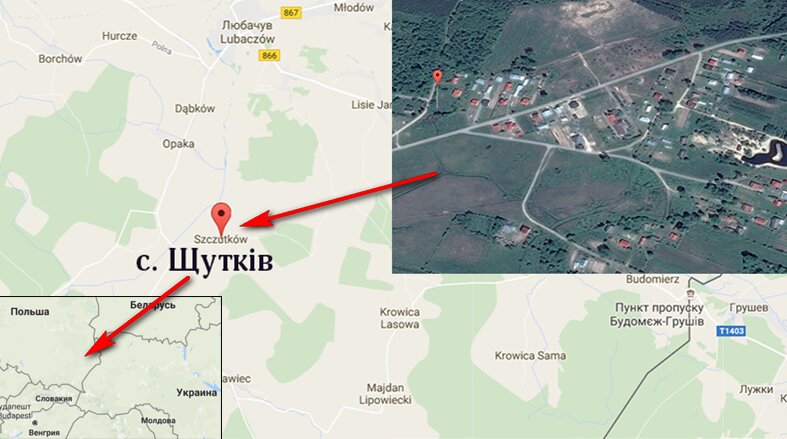
There were 1150 faithful Greek Catholics, 90 Poles, 40 Jews and 25 Roman Catholics in the village of Shchutkiv. St. Martyr Demetrios Church was built in 1904 on the site of the old, from 1659 one, which in 1668 was presented with Gospel given by Lavrentiy Kachmarskyi. The village also had a primary school, a reading room, and functioning societies “Prosvita”, “Luh” and “Sich”.
The young people of the village were being brought up in a Ukrainian patriotic spirit. In 1944, the ranks of the UPA (Ukrainian Insurgent Army) were joined by about 80 village boys and girls. One of those was my uncle, my mother's brother, Mykhaylo Ihnat, born in 1922. He served as a Chotovyi (platoon leader) of the 11th Chota (platoon) of the “Mesnyky-1” Hundred in “Zaliznyak” Kurin which operated in Lyubach area and partly in Yaroslavshchyna.
In the times of Poland's rule, Ukrainians were infringed, being not let to the government, educated people having great difficulties with finding jobs, etc. Ukrainians were also forced to become Roman Catholics. To my countrymen's credit, there were no such cases in the village.
Looting and killing of Ukrainians in the lands of Nadsyannya occurred almost daily during in 1944-1946. Immediately on the next day there were reports, how many people were killed in Stare Selo, Kobylnytsya, Korovytsi, Lukavtsi, Velyki Ochi, Bigali, Sukhowolya and other outskirts, details were reported how little boys' heads had been smashed against the door jambs. Extremely hard was Ukrainians' fate in the outskirts of Leżajsk, where there were no forests, so there was no bases of the UPA dreaded by Polands like fire.

Historical map of Nadsyannya
In 2005 in our “Nadsyannya” society, we published the Almanac “Memory could not have been taken away from us” which contained all Polish gangs' atrocities against Ukrainians. Comments which we get on these messages, can be reduced to the words: “This cannot be read without bromine!” I'll mention just two examples.
In a small village of Sedlyanka there lived the Hvozdyks: mother, two daughters, two sons and three grandchildren. At the prompting of a neighbor Pole — proletarian Sigmund (aka Ian Nadzerski), a thug broke into their house and shot everyone. Half dead among the corpses was one daughter Klementina. She was taken to the hospital. When the doctor-Pole learned that she was Ukrainian, he said: “We do not medically treat Rusins, we kill them”.
The widow of a lawyer, JD Maria Geletsinska lived in Leżajsk with her daughter in the street near the widely known in Poland Monastery Church. I once visited the place, the building is really unique. Locals Kazimesh Stotski and Venuslav Sotski captured them, took them to a forest near the “holy monastery”, tied to a tree and raped the mother to death before her little child's very eyes, and then did the same to the daughter.
Our family was dominated by fear. I remember how at the prompting of a local Pole, my father's friend Blaschko, one evening the Poles broke into our house, started shooting at us all sitting at supper. Father was wounded. From death we were saved only by darkness, because the kerosene lamp was smashed by a bullet, and we all fell to the floor. In the morning, we counted 18 bullet holes in the walls. That night we were robbed of everything, so to Ukraine we brought only one cow. Before my eyes the village bandits — Poles shot dead our relative Mykola Chaban, just on our fence, as he was running away.
All this happened within 1945. I was 8 years old, but the circumstances made me 8 years older, I remember everything. The fear was great. In the same 1945 my father and grandfather did not sleep a single night in the house. I often grabbed my sheepskin and then slept in the loft of the stable or in the barn, in the cowshed, and even in the bushes at the apiary. Every morning I watched rural Polish girls returning with stolen Ukrainians' possessions, with guns, laughing loudly, telling how exactly they had robbed and killed the “boars”.
I could confirm Mykhaylo Voronnyi's reminiscences with what I have heard from my granny and father. It was then, at the end of 1945, that my family were expelled from their own house (the grandfather in the twenties-thirties, after his return from seasonal works in Argentina and France, built that house. He loved to teach, that a Ukrainian with no hut is like a plant without roots… And within a moment our family lost all its “roots” earned by years of hard work). Father recalled how in 1945, before leaving, no one had been sleeping in the house: they would go into the field, into the stables, somewhere else. It was customary in the region for hundreds of years, not only in the thirties and forties of the last century.
I remember another tragic page in the life of my ancestors. My grandmother had never seen her father (my great grandfather), because she was born, when he was fighting in the First World War. He survived the hell of it, but was killed in 1918 by... a Polish officer's saber when returning from the front. It happened near the village a few steps from the native hut before the very eyes of his wife, my great grandmother, hurrying to meet him...
A lot of similar stories I had heard or read about this in Ukrainians and Poles' memoirs. But it would never occur to me that I will have to tell all this in the media. I also have the right, especially after the Polish Sejm's recent statements, to reproach the Polish exactly as they are trying do it against us, Ukrainians.
But this would mean my going down to the level of an avenger to Poland, positioning itself our main ally and support in Europe, and to blame ordinary Poles who for the most part support my state today. There is no way I could afford it, regardless of how hard Russia is trying to “help” me in this case! Because I know how the Poles in 2014, in the most difficult period for us, delivered to our state remedies for our warring soldiers, especially helmets and bulletproof vests. No one else dared to do this at that moment, maybe with willingness listening to Russia's propaganda. Some still believe that propaganda. What a great pity!...
We must be clearly aware of Poland's modern geopolitics and the actions of individual citizens, ideologically clouded. We need to explain their actions and to try to forgive, like we forgive family and friends who have been our family in this not simple time.
However, there is no forgiveness for the so-called “citizens” or political forces, both on the Polish and on the Ukrainian side, who seek to use the once shed blood for the benefit of the policy. Because exactly to them Moscow will be grateful for this. Remember its favorite “divide and conquer”? About something else it does not want to hear.
This principle and the theme touched upon by me are special for Russia today, especially in connection with the just mentioned by me Poland's role of the chief conductor of Ukraine's interests in the European Union and NATO. Together with Germany, Poland has acted as the initiator of the policy of sanctions against the regime of V. Putin. Here, as they say, no comment.
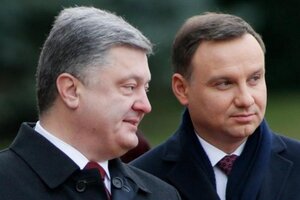 As for our problems or claims, we really had, have, and undoubtedly will have them, as it always happens in relations between neighboring countries, including those with long-standing democratic traditions. However, we can prevent problems from escalating to the level of such controversy, which may cause mutual destruction of statehood to the delight of the other “well-wishers”. In our case — Moscow. The situation with the notorious decision of the Polish Sejm, was actually solved within the framework of President of Poland A. Duda's visit to Ukraine on the day of its independence on August 24 this year.
As for our problems or claims, we really had, have, and undoubtedly will have them, as it always happens in relations between neighboring countries, including those with long-standing democratic traditions. However, we can prevent problems from escalating to the level of such controversy, which may cause mutual destruction of statehood to the delight of the other “well-wishers”. In our case — Moscow. The situation with the notorious decision of the Polish Sejm, was actually solved within the framework of President of Poland A. Duda's visit to Ukraine on the day of its independence on August 24 this year. 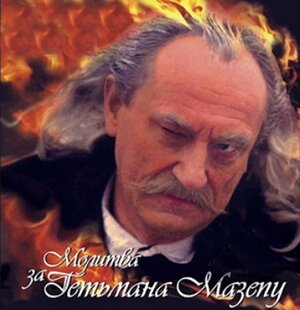 But Russia will not give up to further use the pages of history as a shock weapon against Poland and Ukraine. And we should remember this. And remembering this, we should get united as one front in the fight against Moscow's neo-imperial policy. Otherwise, again, there will be neither Poland nor Ukraine.
But Russia will not give up to further use the pages of history as a shock weapon against Poland and Ukraine. And we should remember this. And remembering this, we should get united as one front in the fight against Moscow's neo-imperial policy. Otherwise, again, there will be neither Poland nor Ukraine.
...In the early 2000s, there appeared another cult film — “Mazepa”, which tells about Ukraine's complex and bloody choice between the European world and the Russian one. That period of history was no less tragic and encouraged to think. And what was Russia's response? Already, together with Ukraine, or to be more exact, with Ukrainian collaborators it filmed the movie “Taras Bulba”, which can be considered one of the direct provocations of the conflict between Ukraine and Poland.



